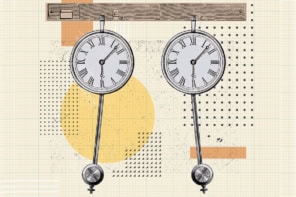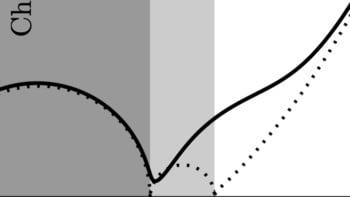An understanding of how crowds move in panic situations can improve the design of public buildings and improve safety in emergencies. But existing models of human traffic flow in confined areas are very simplistic: they are based on fluid flow and don't account for interactions between the fluid 'particles' - the people. A new study by Dirk Helbing, a statistical physicist at Dresden University of Technology, Germany, and co-workers in Hungary, has achieved more realistic results by using the type of self-driven many-body simulation more often encountered in molecular dynamics (D Helbing et al 2000 Nature 407 487).
It is straightforward to incorporate the obvious physical attributes of people in a crowd, like pedestrian mass and velocity, into the simulations. But Helbing’s team went on to include psychological tendencies in the model by likening them to the kinds of interaction that take place between particles. The tendency of people to stay away from each other is represented by a mutually repulsive force. A ‘body force’ opposes body compression in crush situations. The desire to maintain a certain velocity-dependent distance from other people and the walls is modelled, together with the tendency to follow other people.
The simulations, which measured the efficiency of evacuating a room under different conditions, illustrated three effects. Firstly, at an optimum pedestrian velocity the room empties in a regular and well-ordered manner. But when the ‘desired velocity’ increases – when people are in a hurry – a crowd builds up at the exit, and pedestrians leave the room in irregular bunches. Secondly, the time it takes to evacuate the room increases above the optimum velocity. As people become more impatient, a feedback loop emerges in which people become injured and impede traffic flow further. The third process identified by the simulation is mass behaviour, with two extremes of purely ‘herding’ or purely ‘individual’ behaviour. The simulation showed that a mixture of both behaviours was the best solution for finding hidden exits in a smoky room. Herding often blocks a single exit and overlooks other possible exits; but people behaving as individuals move in different directions, obstructing each other and keeping information to themselves.
The good news is that most of the dangerous situations can be avoided by making exits wider. Columns situated asymmetrically in front of exits can also prevent the critical build up of crowds. The team now hopes to compare its findings with real data such as video footage of panic escapes and alternative theories.



